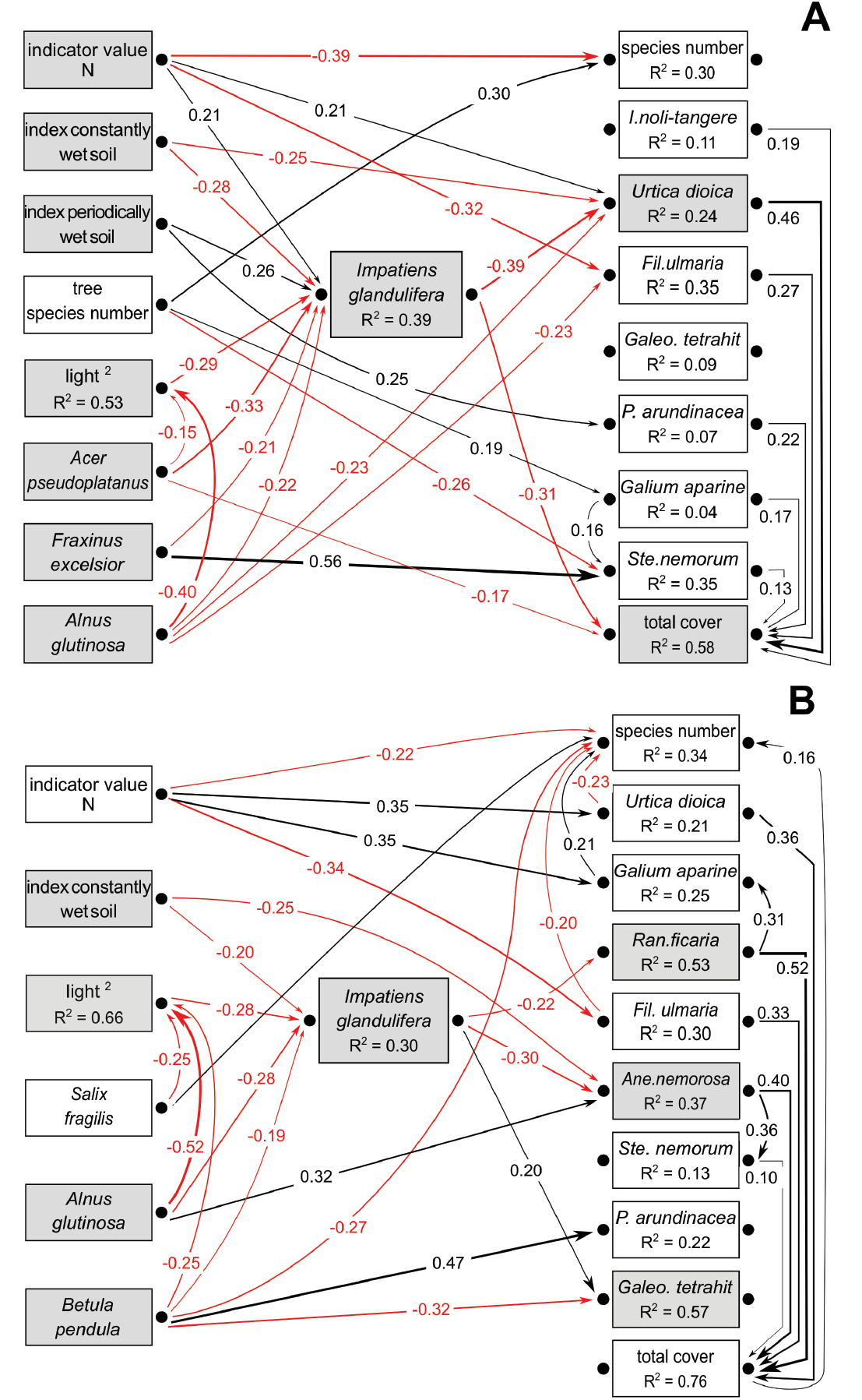
|
||
|
Results of the piecewise structural equation modeling for summer (A) and spring (B). Arrows show significant correlations between the environmental variables shown to be important by the model selection (Suppl. material 4, Table 1), cover of Impatiens glandulifera and resident vegetation parameters. Included resident species are the most frequent ones: Ranunculus ficaria (Ran.ficaria), Urtica dioica, Filipendula ulmaria (Fil. ulmaria), Galium aparine, Anemone nemorosa (Ane. nemorosa), Phalaris arundinacea (P. arundinacea), Galeopsis tetrahit (Galeo.tetrahit), Stellaria nemorum (Ste. nemorum) and Impatiens noli-tangere (I. noli-tangere). Arrows show significant correlations, red arrows negative ones, black arrows positive ones. The thicker the arrows, the higher are the standardized regression coefficients (β), which are stated next to the arrows. R2 values for the component models are given within the boxes of all response variables. Variables that are directly connected to I. glandulifera are highlighted by gray colored boxes. For the spring model cover of I. glandulifera was log-transformed. n = 114 plots for summer, n = 111 for spring. |